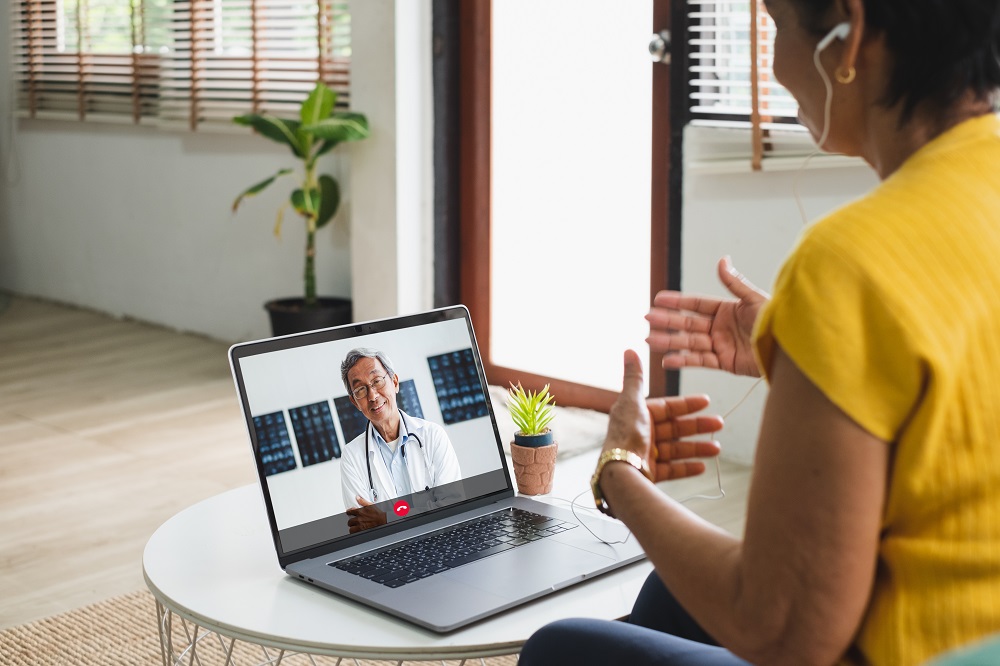With the arrival of the Covid-19 pandemic, people were urged to stay at home and practice health and safety protocols such as social distancing. Unfortunately, this has brought access difficulties to a variety of things, including healthcare.
This has forced the healthcare sector, among other industries, to rethink the way they provide care to patients. This is where telehealth comes in.
According to Health Resources Services Administration (HRSA), telehealth refers to the use of telecommunications and electronic information to support remote clinical health care, professional and patient health-related education and public health administration.
According to statistics, telehealth usage surged in April 2020 with 32% of outpatient and office visits occurring virtually.
What To Expect
Table of Contents
Telehealth will require a device and a strong internet connection to establish a connection with a healthcare provider. In general, you’ll have to access a virtual waiting room until a healthcare provider is ready to see you.
There’ll be an exchange of information and you’ll have to examine yourself with specific instructions from your provider. Then, the doctor will provide a diagnosis and treatment. If a prescription is needed, your doctor may send you an electronic prescription as done during services like DoctorAI online prescription consultation.
As you can see, in many ways, a telehealth consultation is much like an in-person visit. That said, to make the most out of your telehealth consultation, you need to be properly prepared. Here are some things you can do.
-
Contact Your Insurance Company
Before you make a telehealth appointment, you want to talk to your insurance company and ask about copays and coverage. While most states have now required insurers to cover telehealth consultations (even Medicare expanded its coverage for telehealth consultations), some insurance companies still don’t or have limited coverage for telehealth appointments.
This way, you can ensure that telehealth consultations are covered by your current insurance and avoid any unexpected bills.
-
Find A Quiet Place
Finding a private place on the spot isn’t easy, particularly if you live with your family or other people. So, take the time to find a quiet room for your telehealth appointment so that you don’t have to worry about interruptions.
-
Test For The Technicalities
Whether you’re using a laptop or your smartphone, it’s best to familiarise yourself with the video chat software that the telehealth company uses. While most telehealth companies use well-known video services such as Skype, FaceTime, or Google Meet, some may have their own video conferencing software.
So, it’s best to ask them ahead of time and do a test run on the device you’ll be using. This can reduce worry or stress about the technicalities when the appointment time comes.
-
List Your Symptoms
If you’re sick, then you need to give the doctor as much information as possible during your consultation. So, list down all symptoms you’ve been feeling. Be detailed about each symptom, noting how long each one has been apparent. If you have a headache, take note of when it first occurred, for how long, and how severe it is.
Take images, if possible. If signs of allergy appear, take a clear picture that you can show to your doctor during the consultation.
Also, you need to be honest and transparent about symptoms so that your doctor can do a proper diagnosis and give appropriate treatment. Photos may not be enough, so you need to help your doctor by describing your symptoms accurately.
-
Prepare Your Medical History And Related Documents
During consultation, your doctor will ask you about your medical history and relevant questions about your symptoms. So, gather any relevant documents that may provide necessary information regarding your medical history.
Some of the basic documents you’ll need to prepare are:
- A list of your prescriptions, medications and supplements you’re currently taking
- Specific test results
- Your primary doctor’s name and contact details
- Your pharmacy’s address and contact details
- Insurance information
-
Keep At-Home Medical Devices Close
As you won’t be consulting your doctor face-to-face, you want to provide your own medical devices during your consultation. The healthcare provider could ask for a current reading during a consultation, and you can’t do that without the right medical devices.
Some of the at-home medical devices commonly used for a telehealth consultation include:
- Scale
- Heart meter
- Glucometer
- Thermometer
- Blood pressure monitor
Of course, you must know how to use these or have someone around who does.

Make A List Of Questions
Make a list of questions to ask your doctor. This will allow the consultation to go smoothly as you no longer need time to go through your head for what you need to know. Here are the basic questions you can ask. Take note that you’ll have to list more, depending on your health situation.
- Do I need any medical tests?
- How do I contact you for follow-up questions?
- What should I do if my symptoms persist?
- Will I need a prescription?
- Do I need an in-person visit?
Takeaway
There’s no doubt that telehealth is gaining popularity—for both providers and patients—in the aspects of healthcare delivery and access. Your first telehealth visit may seem daunting. But by following the above tips, you can become better prepared and ensure a positive remote consulting experience.

